FairSquare Comics presents Mutiny: Black Girl Magik, written by FairSquare co-owner Kristal Adams, illustrated by Asiah Fulmore, and co-edited by Amanda Meadows and Fabrice Sapolsky, with a main cover, drawn and colored by Alitha E. Martinez. Now crowdfunding on Kickstarter through March 26, 2024, the first issue follows Moriyah Pleasant, a witty queen with the magic touch whose reputation gets her dragged into spacetime antics, forcing her to fight a tyrant consumed with destroying all magic in the universe!
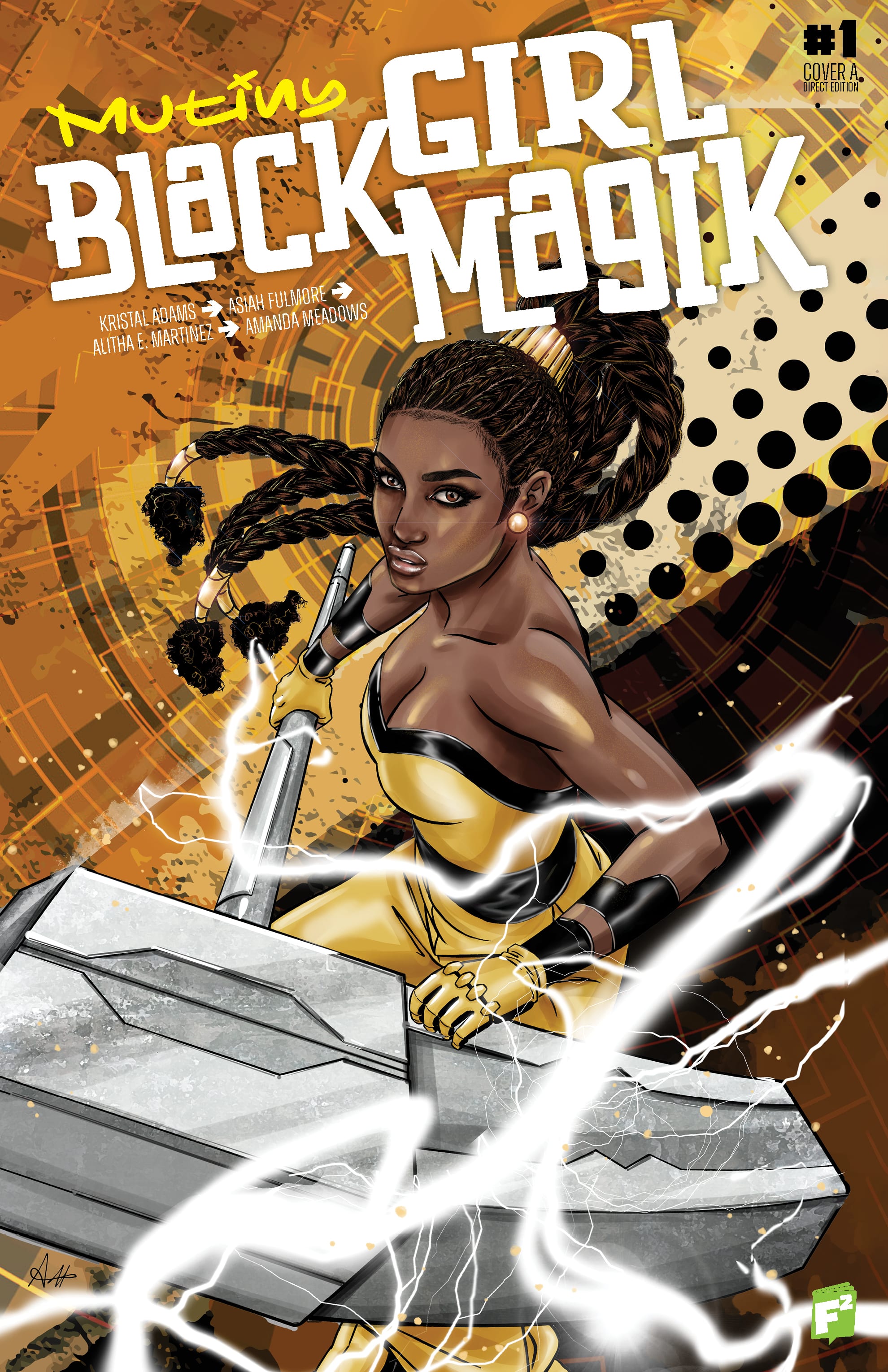
The Beat caught up with Adams, Fulmore, and Meadows to discuss the crowdfunding campaign, the upcoming release of Mutiny: Black Girl Magik, and what FairSquare Comics hopes to accomplish with a book from an all-Black femme creative team.
DIEGO HIGUERA: What went into transitioning Miss Mutiny from a magazine mascot to a comic book character?
KRISTAL ADAMS: Created by ChrisCross, the original design was so impactful that we thought every magazine had to have a Miss Mutiny on the cover. So, it became this thing where she represents something about who we’re trying to reach and who we’re hoping to represent. I think there’s a little bit of every woman, every person aspect about her—there’s a strength, a femininity—so we decided to put her not just in the magazine but to make her the mascot for the company, which meant that she was everywhere.
We’re always asked, “Well, what’s her story?” Like, “It’s cute that you have these other books, but I came for her. I would like to know about her.” That’s not to say that nobody bought books after that, but it was always a question of people being interested in the vibe—you know, they’re not just interested in catching vibes. They want to know more; they are intrigued by this mascot, and so we decided it was time to give her a story.
HIGUERA: How did the team come up with the concept of “Star Wars meets The Wiz” for the series, and what elements from each franchise are incorporated into the story?
ADAMS: “Star Wars meets The Wiz” came to me after I wrote the series. I didn’t say that’s what I was writing; they’re influences. I grew up watching Star Wars and watching, loving, and falling in love with The Wiz, the movie and live stage play. Throughout my life, I’ve gravitated towards media where there’s a journey of a woman into a place that she doesn’t know and is learning about life. And I moved to New York a year ago, so these themes are popping up again.
AMANDA MEADOWS: Kristal and Fabrice are a dynamic power couple, and they already had Mutiny and formed all of that. I met them for the first time in real life at LA Comic Con in December of last year. I was already attracted to the books on the table and recognized Mutiny from the first issue, and we hit it off. We discussed what was coming up, what was happening, and how hard it was. We commiserated on many of the same experiences, like going up against many of the same sorts of stone walls within the industry for people of color—for basically any ethnic person who wants to be authentic, as opposed to the sort of ‘Own Voices’ exploitation version—and how FairSquare Comics has done such a great job of [combatting] that.
Then, Kristal and Fabrice asked me to come on as a co-editor. Fabrice had already started a lot of it in terms of shepherding the first issue into the script and early pencil stages, so I came in time to give notes on the pencils. It’s foundational for the roughs because they’re the best expression of the script, and seeing Kristal’s words come to life—how crazy. It’s been wonderful collaborating with them on this project.
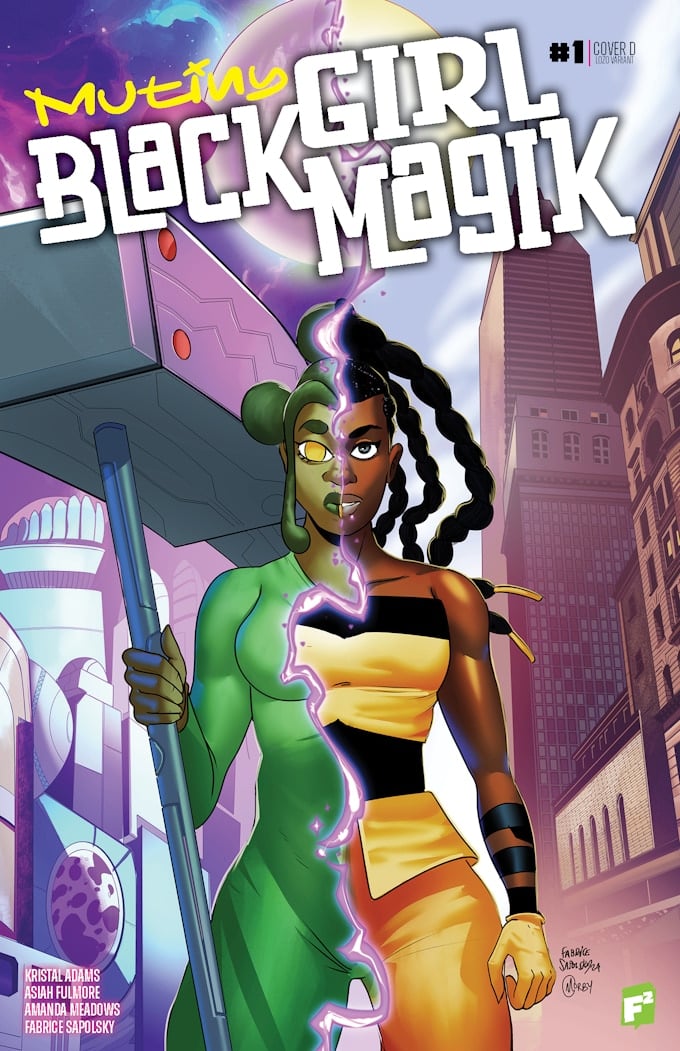
HIGUERA: How did your individual backgrounds and experiences contribute to this project?
ASIAH FULMORE: I’m not sure! I went into the project to enjoy myself, so many decisions were very reactionary. While I’m sure there are some heavy influences, I haven’t given them any serious reflection.
MEADOWS: I’ve been editing for a long time, and Mutiny is the exact kind of project I wish I could’ve worked on from the start of my career. I had to create those opportunities, and even then, it was challenging to get by distributors and retailers; we already had so many experiences in common, not to mention Fabrice’s role in comics as a “many hats person.” I know that’s a huge part of what it takes to run a press with two people. Fabrice, Kristal, and I all know the same horrors; nothing needs to be explained, so in that way, this sort of organic collaboration is possible because of where we all are in our respective careers.
ADAMS: We are still early in the process. This is just issue one, but from my experience— because my background is in stand-up comedy and writing for television, I have had many notes and types of note-givers from different backgrounds—it hits differently. Once, I was writing jokes for a show, and I got pushback about what people would get, thinking they wouldn’t get the joke. If we water everything down, and if we don’t make the natural joke for the in-group, the in-group will think that we are stupid. Google is available! So, if the out-group doesn’t feel that they get it immediately, they can Google it and become part of the in-group. If we don’t make a joke that the in-group will get, we do a disservice to people trying to show and share their experiences. It feels more disingenuous not to bring this up than to just sanitize it.
MEADOWS: They can’t divorce their imagination from their discomfort; it’s so constrained and wild to see. It’s comedy! It’s specificity, the whole of it. It’s about the dry, specific feeling; it’s a social art. If you don’t get something, you turn to your coworker and ask what the bit is.
ADAMS: Exactly! And then you learn something!
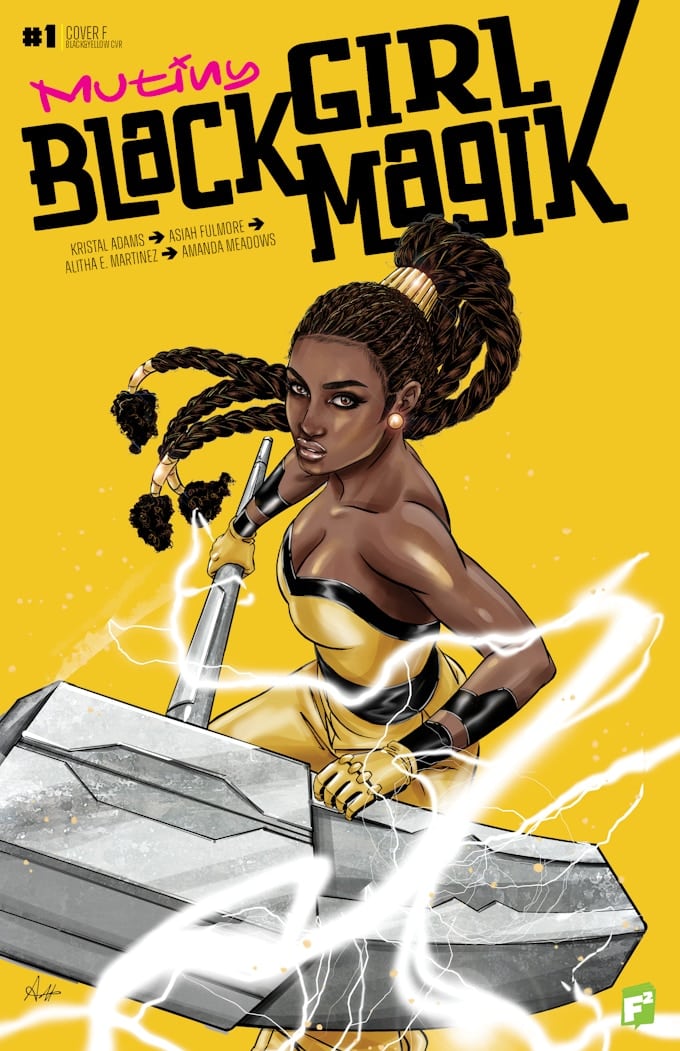
HIGUERA: What can readers expect from the Mutiny: Black Girl Magik series regarding storytelling, art style, and themes?
ADAMS: In the first issue, Moriyah is on a journey to make her introspective worldview more external and care about something bigger than herself. She’s also wrestling with what that means as a Black woman because there was a long time when Black women were shouldering a lot of the causes that were happening in the US, and I think it’s still happening a little.
Then, therapy comes in. People like therapy; it’s become less stigmatized. As people start to parse out who they are and what they’re meant for, many stop taking care of everybody and everything, and that’s where Mutiny is. She’s done the work of separating herself from taking on everybody’s cause and caring for everybody, right? But now, this mission she felt had no connection to her, and she was being asked to care about something outside of her again. And I think the series will go there because that’s where I’m also at. I’ve done the healing work of not being the automatic caregiver for my people (or even in relationships). I’ve healed, so what do I take on? What do I take back? What missions do I accept as my mission? While Mutiny is a story that takes place in space with magic, it’s a story of human growth and development, about understanding yourself, overcoming past trauma, and moving on to something better.
MEADOWS: What you’re describing, Kristal, it’s the process of, “You’re going through the shit; now, you’re coming out of it and freeing yourself.” Now, Moriyah’s hammer represents her being confronted with the responsibility of, “Okay, it’s time to free others the way you freed yourself.” The first issue sets us on a course, and by the end, you’re like, “Damn, I got to know what this hammer is about to do and what Moriyah’s about to do with it.” So, I’m excited for y’all to see and drink in Asiah’s gorgeous art; she’s putting her foot in it!
ADAMS: It’s very good, and I love her cover, as the person sitting with it and the story has a richer understanding of the character. All the covers are incredible, but I think her cover captures my obsession. We see the world through this lens of social media, and we’re ingesting so much of what we’re learning through that. You see that in her cover, that is very front and center, and this kind of like, this girl looks like she’s figured herself out, but you also can tell that there’s a lostness.
FULMORE: When designing my version of Mutiny, I channeled a specific type of Black girl energy—the type we see only online in Black girl spaces. The late 20s, successful, childless, single, and (most importantly) healed Black woman is free, living her life, and chasing her happiness. That’s the type of energy I wanted for Mutiny. For the other characters, it was kind of the same thought process but for different archetypes.
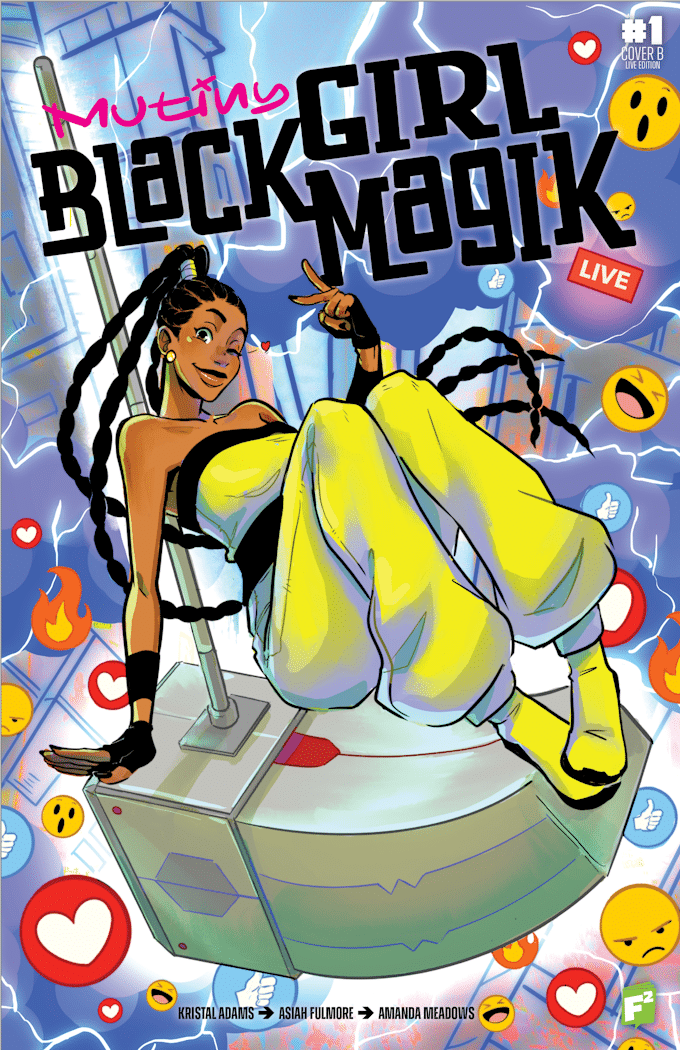
HIGUERA: Is there a question you wish an interviewer would have asked you, and can you expand on that topic?
ADAMS: I hope people want to support it on its merits because it sounds interesting. At a certain point, it’s exhausting to remind people that Black communities have been ravaged over and over by different things, so we have to put this front and center to remind people to care. On the one hand, I’m not opposed to using it because I believe this book should be made. If it gets people to pay attention, we must use that. Even Women’s History Month, we’ll use that too. Whatever affiliation sparks people’s initial interest in this, I’m fine with using it. If these stories could be told without us having to remind people that would be great, but unfortunately, that’s where it is.
I’ve seen waning interest in shopping Black and supporting Black-owned businesses. There was an intensified interest nearer to George Floyd, which has dissipated and it’s a little heartbreaking, as there are many projects that won’t get made because that interest died. In fact, there have already been projects killed because that interest died. So, yeah, it’s not a question that I wish you to ask; it’s more like a direction in the conversation that’s hard to bring up because it’s a downer. I just want people to read a fun story, and I want them to feel like, “This feels very Black, and it’s so cool that it’s made by an all-Black female team.” But, it does sometimes dishearten me that we have to put this in people’s faces so that they’ll even pay attention to us because we do not have the marketing power of these other corporations that have chosen not to do what we’re doing.
MEADOWS: Everything Kristal said. It’s not just a vibe; it’s expressed in very real material results. As she describes, it’s resulted in layoffs where the first waves chosen were all of the brown, Black, and indigenous people of color. Or, I’ve interviewed for jobs where I knew I was the candidate, but ultimately, it wasn’t me. We know what this is: there’s been a huge retraction within the industry culturally, and people are returning to their comfort zones. This means completely ignoring us in a way that forces us to look at whatever resources we have to get in front of readers who deserve this material. In the case of Mutiny, Kickstarter is the place to go for this kind of thing, so I guess the question would have been, “Why Kickstarter?”
ADAMS: This book was originally created as a potential Free Comic Book Day book and it was rejected, right? And retailers make that decision, right? It’s unfortunate that we have several books that retailers were light on ordering initially, but then we travel all around the country and see the way people’s eyes light up when they see the books. So, we also have the data from firsthand experience with the public, right? The retailers tell us, “It doesn’t work for our store”, or “people won’t buy this”, but then we go to their town and see people buying it from our table. Kickstarter and other platforms allow us to go around directly to the public and say, “Would you like this thing?” We’re not going to wait for everybody else to say yes anymore.
Mutiny: Black Girl Magik is going fast on Kickstarter!


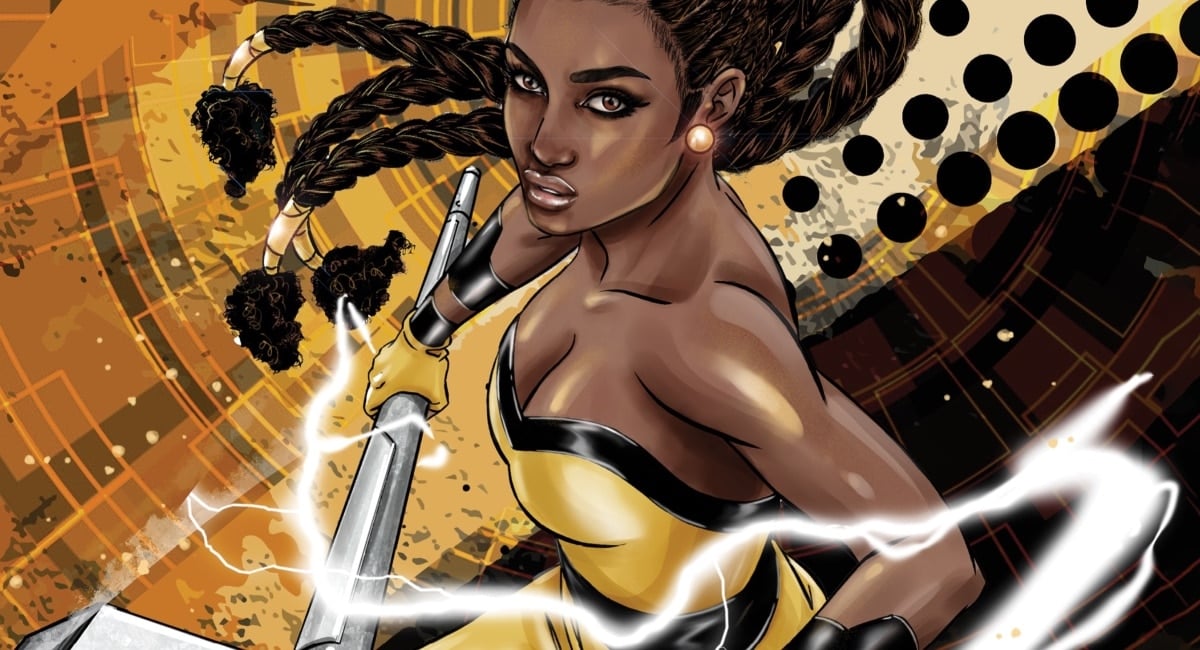







I’m going to buy this comic book based on the title alone…..
Comments are closed.